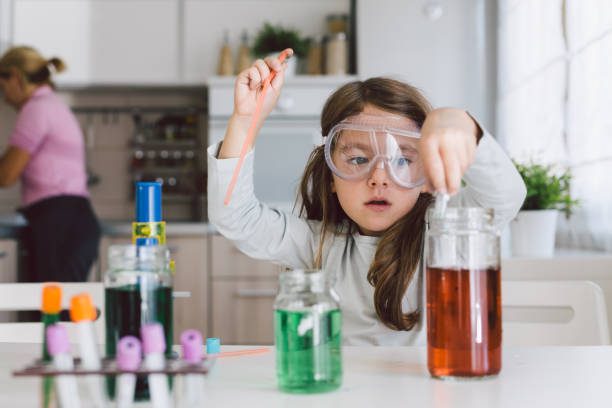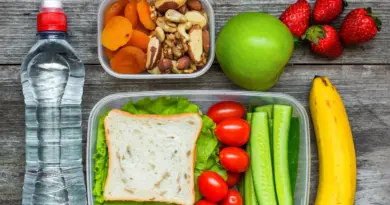Junior Scientists: 5 Entertaining At-Home Science Projects for Kids
Science can be an exciting and educational experience for children, sparking their curiosity and fostering a love for learning. By involving kids in hands-on experiments and activities, you can teach them the fundamentals of scientific inquiry in a fun and interactive way. In this blog post, we will share 5 easy and engaging science projects for kids that you can do at home using everyday materials
1. Homemade Lava Lamp
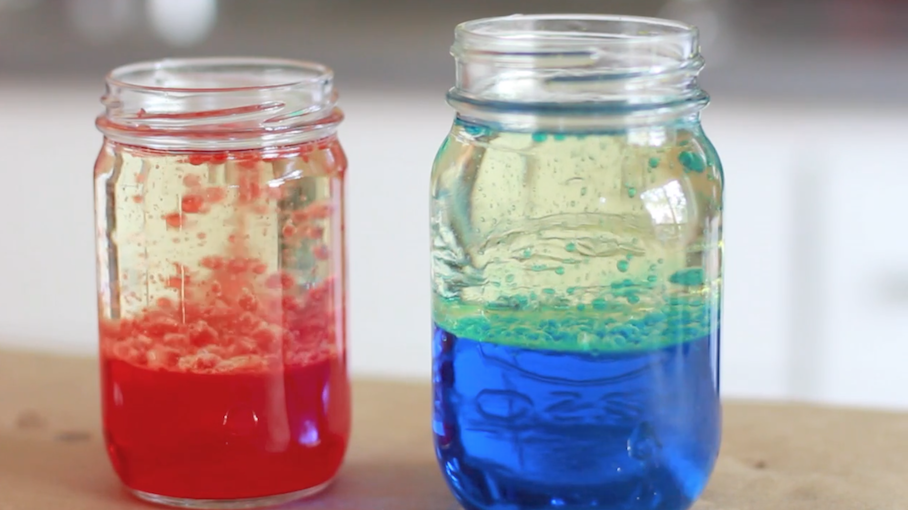
Create a mesmerizing lava lamp using simple household items, introducing kids to the concepts of density and chemical reactions.
Materials:
- Clear plastic bottle
- Vegetable oil
- Water
- Food coloring
- Alka-Seltzer tablets
Instructions:
- Fill the plastic bottle about two-thirds full with vegetable oil.
- Add water to fill the remaining space, leaving about an inch of empty space at the top.
- Add a few drops of food coloring.
- Break an Alka-Seltzer tablet into small pieces and drop them into the bottle.
- Watch the colorful bubbles rise and fall as the chemical reaction occurs.
2. Static Electricity Butterfly
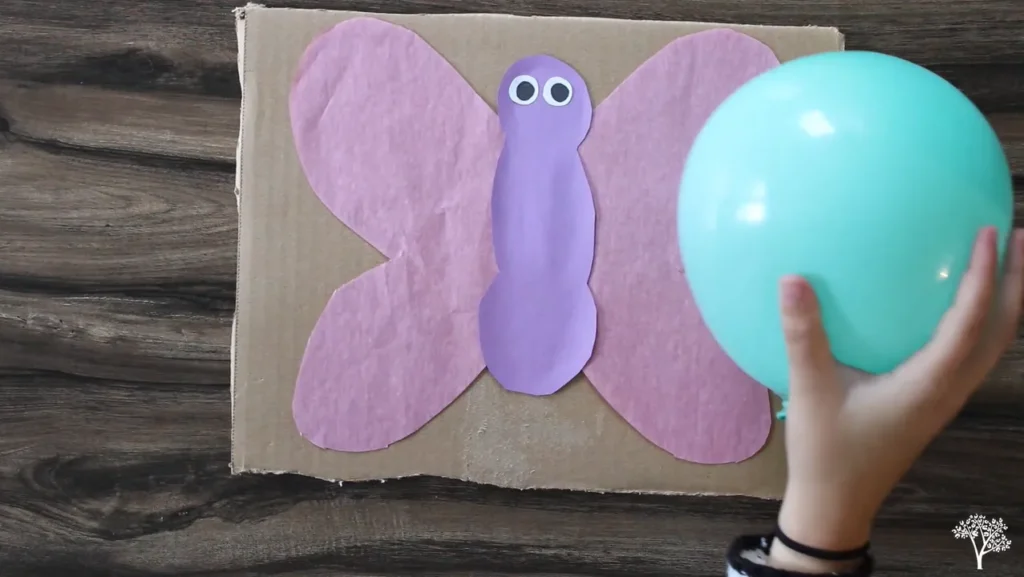
Teach kids about the power of static electricity with this simple and captivating project.
Materials:
- Tissue paper
- Scissors
- Balloon
- Pipe cleaner
Instructions:
- Cut a butterfly shape out of tissue paper.
- Use a pipe cleaner to create the butterfly’s body and antennae.
- Inflate a balloon and tie it closed.
- Rub the balloon on your child’s hair or a woolen fabric to create static electricity.
- Hold the charged balloon near the butterfly and watch as the tissue paper wings move in response to the static electricity.
3. Invisible Ink
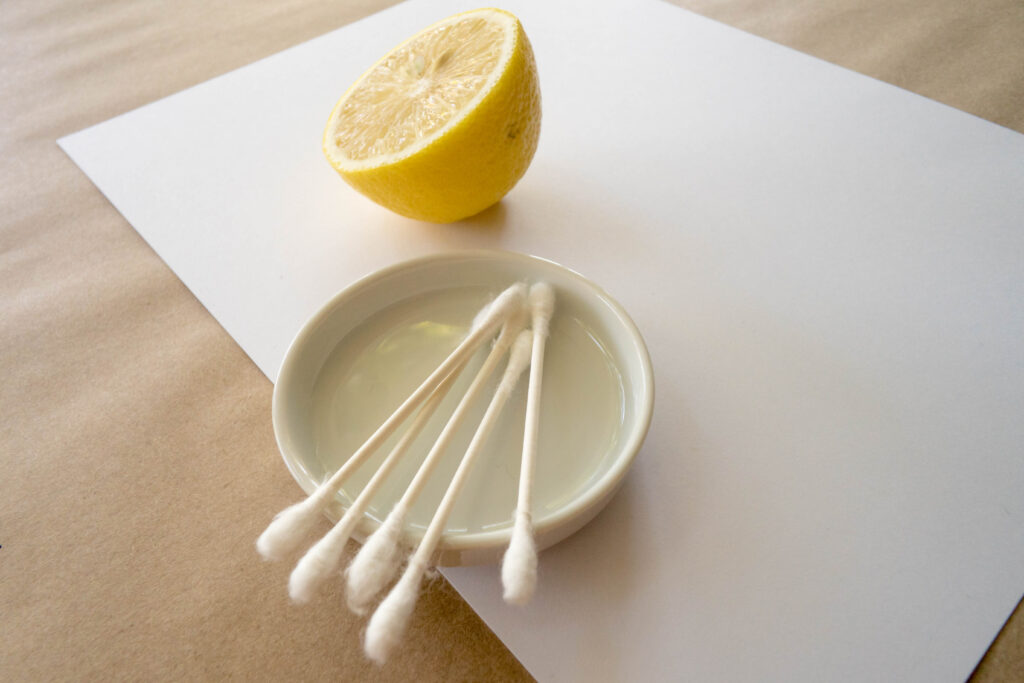
Introduce children to the fascinating world of chemistry with this secret-message project using homemade invisible ink.
Materials:
- Lemon juice
- Cotton swab or small paintbrush
- White paper
- Iron or hairdryer
Instructions:
- Squeeze a lemon to collect its juice.
- Use a cotton swab or small paintbrush to write a secret message on the white paper with the lemon juice.
- Allow the paper to dry completely.
- To reveal the message, heat the paper with a warm iron or hairdryer, watching as the lemon juice reacts with the heat and turns brown.
4. Rainbow in a Jar
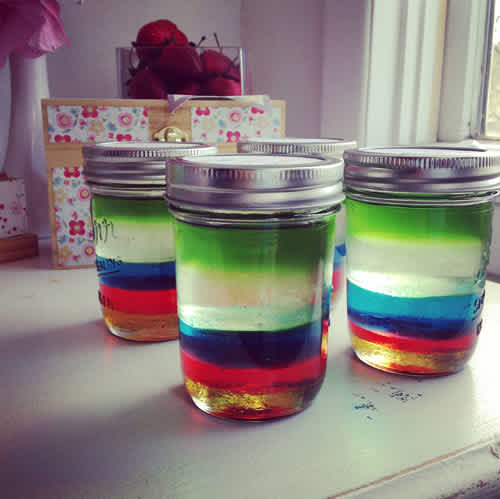
Explore the concept of density with this colorful and visually appealing project.
Materials:
- Clear glass jar
- Various liquids with different densities (e.g., honey, corn syrup, dish soap, water, vegetable oil, rubbing alcohol)
- Food coloring
Instructions:
- Add food coloring to each liquid to create different colors.
- Carefully pour each liquid into the jar, starting with the densest liquid and ending with the least dense. Pour slowly and along the side of the jar to minimize mixing.
- Observe the layers of colored liquid as they settle into a rainbow-like formation.
5. Egg Drop Challenge

Encourage problem-solving and critical thinking with this classic physics project that challenges kids to protect a fragile egg from a fall.
Materials:
- Raw egg
- Various materials (e.g., bubble wrap, newspaper, cardboard, cotton balls)
- Tape, string, or rubber bands
Instructions:
- Task your child with designing and building a protective container for the raw egg using the available materials.
- Test the effectiveness of the container by dropping it from various heights.
- Discuss the principles of force and impact analyzing which materials and designs were most successful in protecting the egg.
Conclusion
These 5 at-home science projects for kids are not only entertaining but also educational, providing a perfect opportunity to bond with your child while fostering their love for science. By engaging your little ones in hands-on activities, you can help them develop essential skills such as critical thinking, problem-solving, and creativity. Moreover, these projects demonstrate that science can be fun, accessible, and relevant to everyday life. Encourage your kids to explore the world around them and to ask questions, nurturing their natural curiosity and laying the foundation for lifelong learning.

